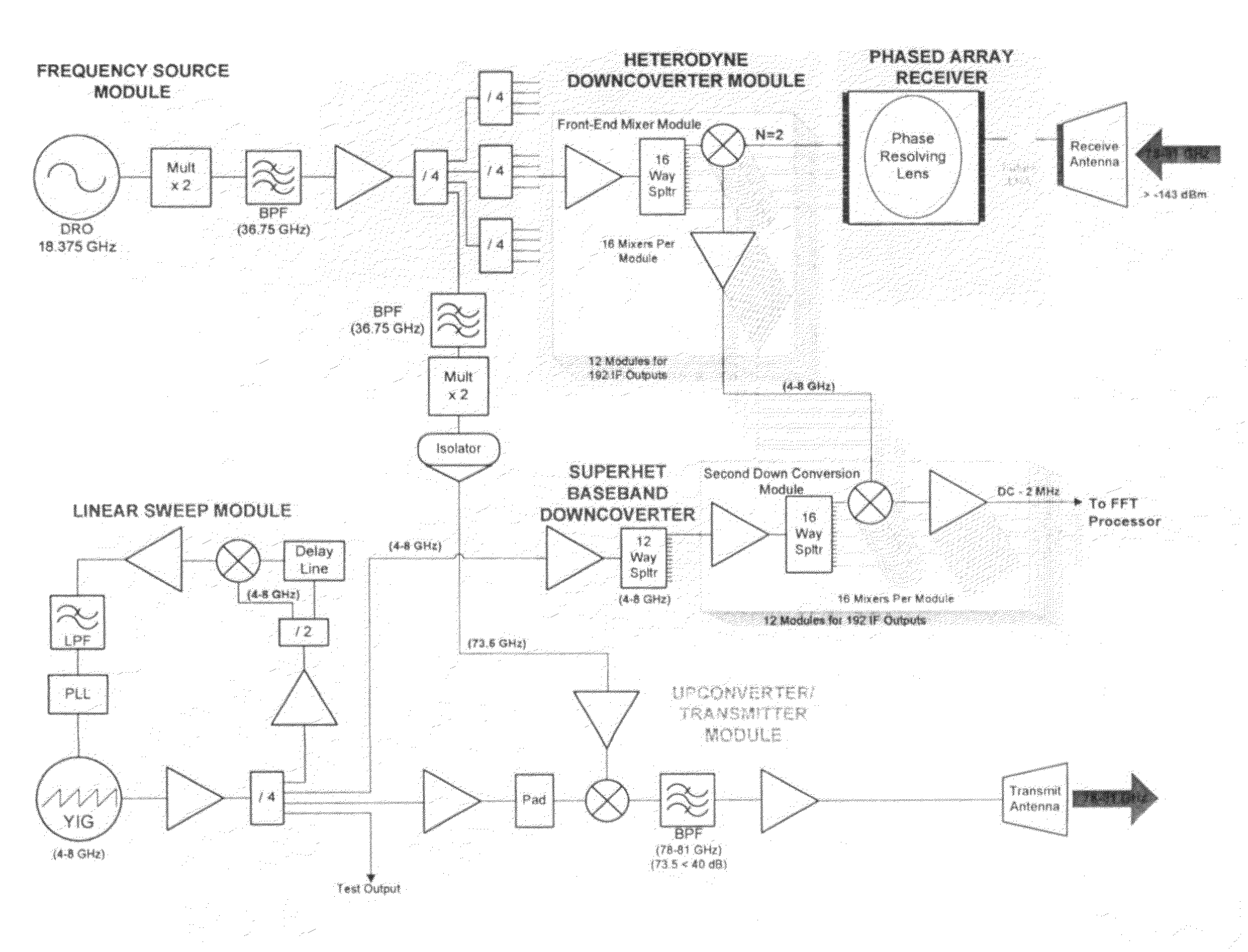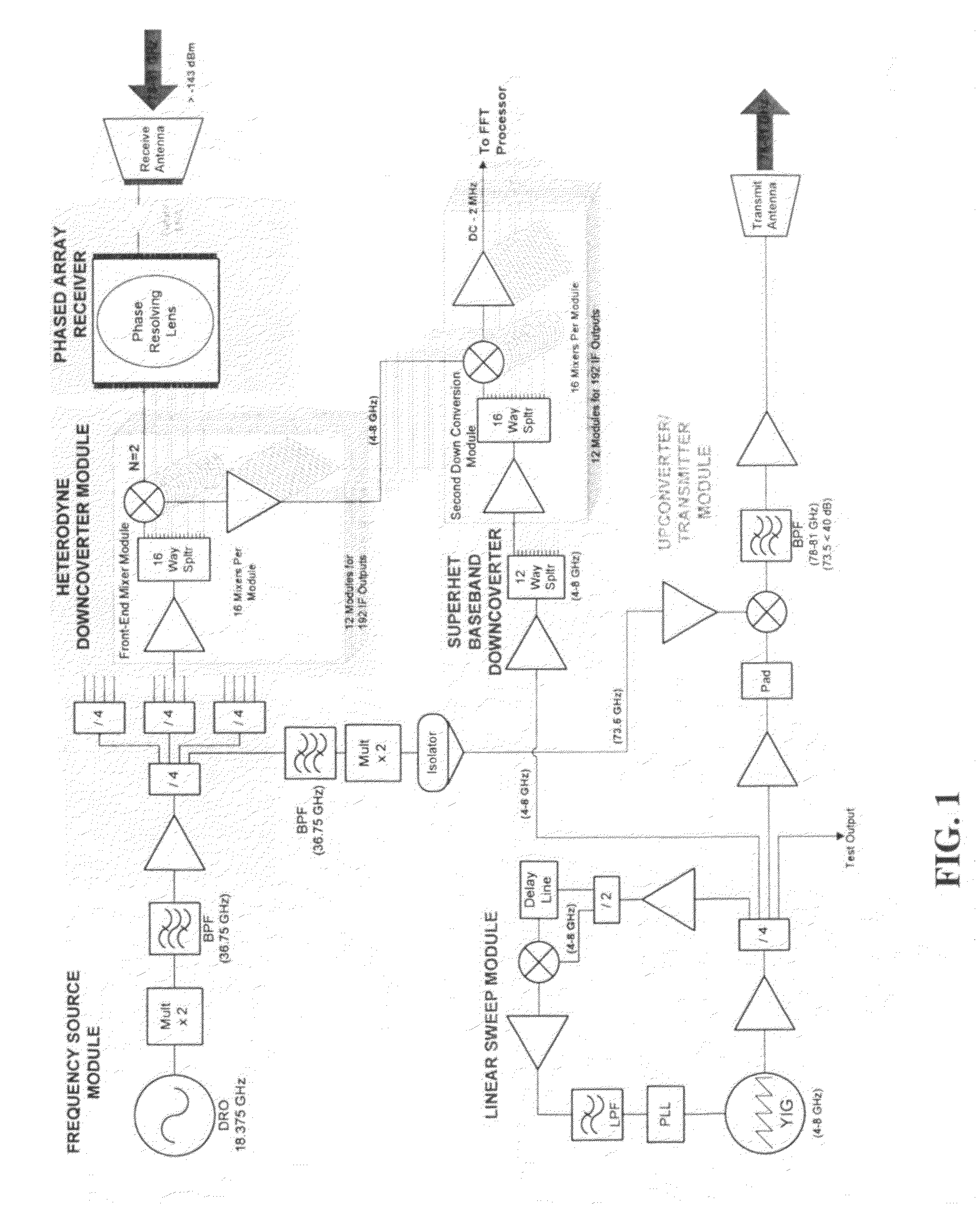Millimeter wave imager with visible or infrared overlay for brownout assist
a technology of infrared overlay and brownout assist, which is applied in the direction of instruments, analogue processes for specific applications, and reradiation, etc., can solve the problems of increasing the probability of detection, low radar power requirements, and high cost solutions, so as to reduce the footprint of the radar, and improve the resolution of the radar projection
- Summary
- Abstract
- Description
- Claims
- Application Information
AI Technical Summary
Benefits of technology
Problems solved by technology
Method used
Image
Examples
first preferred embodiment
[0032]A first preferred embodiment of the present invention, sometimes herein referred to as the “Sandblaster Imaging Radar” or the “Sandblaster” comprises an FMCW radar using a bi-static MMW antenna assembly. The antenna assembly for the baseline (D-Band) concept measures only 6″×7″×1″. The only MMW components required for the radar are a local oscillator for the transmitter section and an array of mixer diodes for the receiver section, allowing for simple interchange of the radar front end between V-Band (60 GHz), E-Band (80 GHz), W-Band (95 GHz) D-Band (140 GHz), and Y-Band (240 GHz). Moreover, the antenna / MMW front-end assembly weighs only 3 kg and can be easily swapped out if damaged in battle. The MMW radar provides full 3-dimensional imaging capability at a 120 Hz update rate for narrow field (electronically-scanned) and 1 Hz update rate for wide field (mechanically-scanned) imaging.
[0033]A block diagram of the FMCW radar system is shown in FIG. 1. The radar system is similar...
PUM
 Login to View More
Login to View More Abstract
Description
Claims
Application Information
 Login to View More
Login to View More - R&D
- Intellectual Property
- Life Sciences
- Materials
- Tech Scout
- Unparalleled Data Quality
- Higher Quality Content
- 60% Fewer Hallucinations
Browse by: Latest US Patents, China's latest patents, Technical Efficacy Thesaurus, Application Domain, Technology Topic, Popular Technical Reports.
© 2025 PatSnap. All rights reserved.Legal|Privacy policy|Modern Slavery Act Transparency Statement|Sitemap|About US| Contact US: help@patsnap.com



